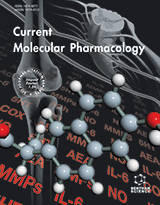Abstract
The development of cancer depends on the delicate balance between cell proliferation and programmed cell death. p16INK4a -cyclinD/cdk4-pRb-E2F1 is a critical pathway regulating cell proliferation in which E2F1 is an important downstream effector. Deregulated E2F1 activity due to the aberrance of the upstream components in this pathway, such as inactivation of Rb or p16, or amplification of cyclinD or cdk4, confers growth advantage to cancer cells and has thus become a hallmark of human tumors. In addition to cell proliferation control, compelling evidence indicates that E2F1 can also induce apoptosis under various cellular contexts regardless of p53 status. Given the frequent inactivation of tumor suppressor pRb and p53 in human cancers, E2F1- induced apoptosis might serve as an additional tumor surveillance mechanism to protect the organism from tumor development. E2F1-mediated apoptosis pathway is therefore emerging as a promising target for therapeutic intervention. Here, we review the recent advances in the understanding of E2F1- mediated apoptosis in cancer cells and discuss how these discoveries may expand our view of E2F1 signaling network and contribute to the development of novel therapeutic strategy.
Keywords: E2F1, Apoptosis, cancer, Therapeutic target
Current Molecular Pharmacology
Title: E2F1-Mediated Apoptosis as a Target of Cancer Therapy
Volume: 2
Author(s): Zhenlong Wu and Qiang Yu
Affiliation:
Keywords: E2F1, Apoptosis, cancer, Therapeutic target
Abstract: The development of cancer depends on the delicate balance between cell proliferation and programmed cell death. p16INK4a -cyclinD/cdk4-pRb-E2F1 is a critical pathway regulating cell proliferation in which E2F1 is an important downstream effector. Deregulated E2F1 activity due to the aberrance of the upstream components in this pathway, such as inactivation of Rb or p16, or amplification of cyclinD or cdk4, confers growth advantage to cancer cells and has thus become a hallmark of human tumors. In addition to cell proliferation control, compelling evidence indicates that E2F1 can also induce apoptosis under various cellular contexts regardless of p53 status. Given the frequent inactivation of tumor suppressor pRb and p53 in human cancers, E2F1- induced apoptosis might serve as an additional tumor surveillance mechanism to protect the organism from tumor development. E2F1-mediated apoptosis pathway is therefore emerging as a promising target for therapeutic intervention. Here, we review the recent advances in the understanding of E2F1- mediated apoptosis in cancer cells and discuss how these discoveries may expand our view of E2F1 signaling network and contribute to the development of novel therapeutic strategy.
Export Options
About this article
Cite this article as:
Wu Zhenlong and Yu Qiang, E2F1-Mediated Apoptosis as a Target of Cancer Therapy, Current Molecular Pharmacology 2009; 2 (2) . https://dx.doi.org/10.2174/1874467210902020149
| DOI https://dx.doi.org/10.2174/1874467210902020149 |
Print ISSN 1874-4672 |
| Publisher Name Bentham Science Publisher |
Online ISSN 1874-4702 |
 27
27
- Author Guidelines
- Bentham Author Support Services (BASS)
- Graphical Abstracts
- Fabricating and Stating False Information
- Research Misconduct
- Post Publication Discussions and Corrections
- Publishing Ethics and Rectitude
- Increase Visibility of Your Article
- Archiving Policies
- Peer Review Workflow
- Order Your Article Before Print
- Promote Your Article
- Manuscript Transfer Facility
- Editorial Policies
- Allegations from Whistleblowers
- Announcements
Related Articles
-
The Immunomodulation and Anti-Inflammatory Effects of Garlic Organosulfur Compounds in Cancer Chemoprevention
Anti-Cancer Agents in Medicinal Chemistry Monoclonal Antibodies Targeting the Epidermal Growth Factor Receptor
Current Drug Targets Antidotal Effects of Curcumin Against Agents-Induced Cardiovascular Toxicity
Cardiovascular & Hematological Disorders-Drug Targets New and Highly Potent Antitumor Natural Products from Marine-Derived Fungi: Covering the Period from 2003 to 2012
Current Topics in Medicinal Chemistry RNA Interference in Cancer: Targeting the Anti-Apoptotic Protein c-FLIP for Drug Discovery
Mini-Reviews in Medicinal Chemistry Synthesis and Bioactivity of (R)-Ricinoleic Acid Derivatives: A Review
Current Medicinal Chemistry Editorial [Hot Topic Ion Fluxes and Cancer (Guest Editors: Luca Munaron and Annarosa Arcangeli)]
Recent Patents on Anti-Cancer Drug Discovery Hedgehog Signaling and Urological Cancers
Current Drug Targets The Potential of 11C-acetate PET for Monitoring the Fatty Acid Synthesis Pathway in Tumors
Current Pharmaceutical Biotechnology A Quantitative Proteomics Approach in the Study of MicroRNA 181a in HepG2 Cells
Current Proteomics Disorder in Milk Proteins: α-Lactalbumin. Part B. A Multifunctional Whey Protein Acting as an Oligomeric Molten Globular “Oil Container” in the Anti-Tumorigenic Drugs, Liprotides
Current Protein & Peptide Science Probiotics as an Alternative Strategy for Prevention and Treatment of Human Diseases: A Review
Inflammation & Allergy - Drug Targets (Discontinued) Emerging Molecular Functions of MicroRNA-9: Cancer Pathology and Therapeutic Implications
Anti-Cancer Agents in Medicinal Chemistry Synthesis, Molecular Docking Study, and Cytotoxic Activity of 3,4-diaryl-5-(4-pyridinyl)-1,2,4-oxadiazole
Medicinal Chemistry 4-Methylumbelliferones Analogues as Anticancer Agents: Synthesis and in Cell Pharmacological Studies
Anti-Cancer Agents in Medicinal Chemistry Mechanism of Action and Therapeutic Potential of Novel Adamantyl Retinoid-Related Molecules
Current Cancer Therapy Reviews Simultaneous Amplification of HER-2 (ERBB2) and Topoisomerase IIα (TOP2A) Genes - Molecular Basis for Combination Chemotherapy in Cancer
Current Cancer Drug Targets Current Targets for Anticancer Drug Discovery
Current Drug Targets Genetic Susceptibility to Risk for Bladder Cancer in Individuals Working in High Risk Occupations
Current Pharmacogenomics SENP1 as A Biomarker for the Diagnosis of Cancer: Review of the Science and Published Patents
Recent Patents on Biomarkers


























